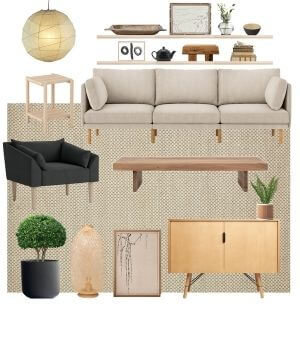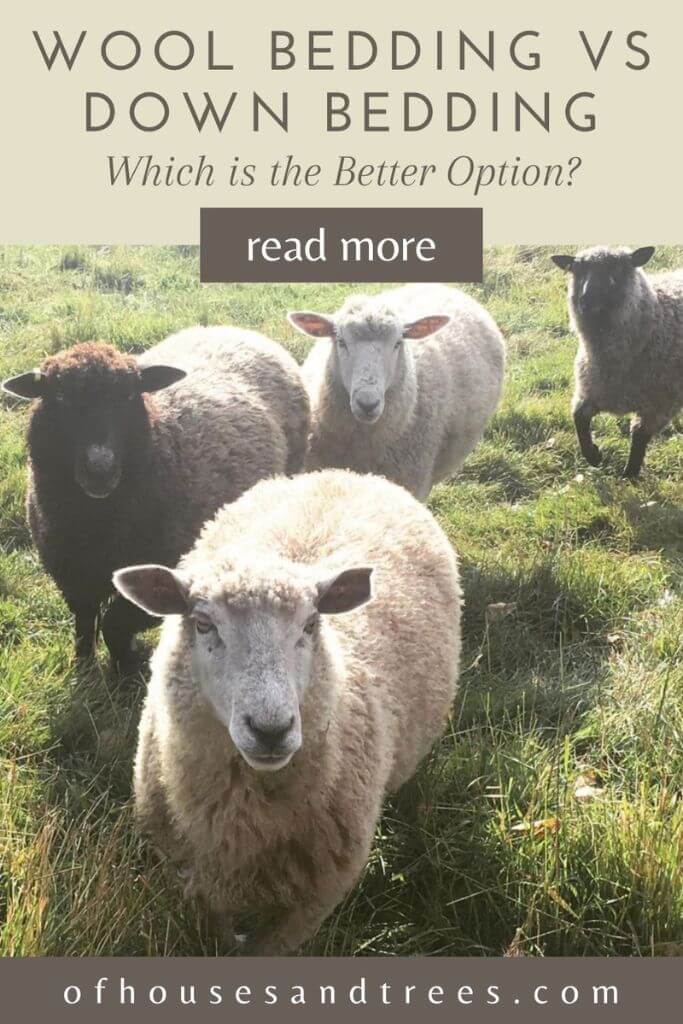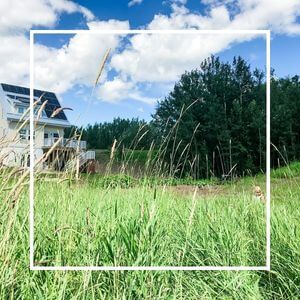Wondering which comes out on top in a comparison between a down vs a wool comforter? Here is an honest look into the more ethical, sustainable and overall better option.
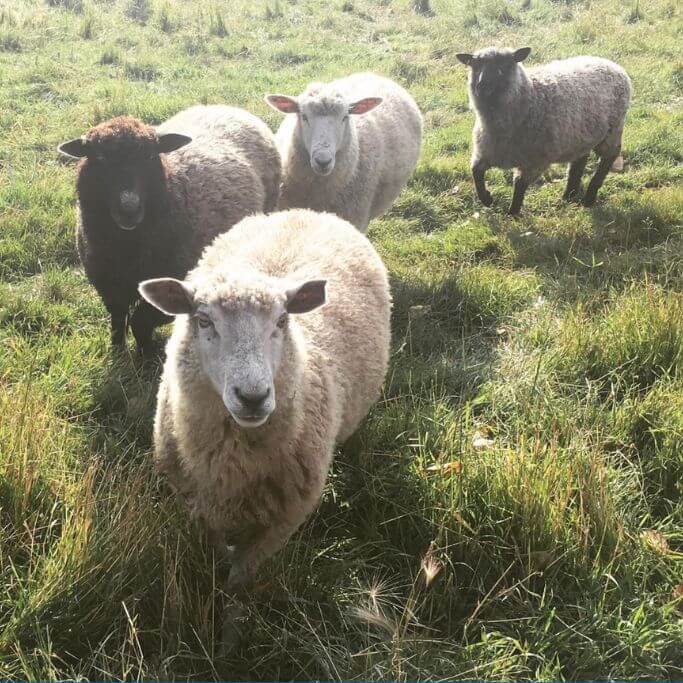
If you’ve spent any time looking into bedding, you know that down filled duvets and comforters are extremely popular. Yet, there are many reasons to search for an alternative to down – whether it be due to sleep preferences, to allergies or for ethical and environmental reasons.
Down doesn’t have to be your default choice. Not when there are other options that are more ethical, more sustainable – and honestly more comfortable – than down. Options such as regenerative wool bedding!
Keep reading to learn more about the pros and cons of down bedding and why wool – specifically regenerative wool bedding – is most often the better option. I’m also going to discuss the sustainable bedding brand Antipodean Home, who is dedicated to creating regenerative wool products that actually help the planet – all while helping people sleep better.
Featured Video
What is Regenerative Wool Bedding?
Some of you may be wondering what “regenerative” wool is. To understand regenerative wool, you must first know what regenerative agriculture is. Regenerative agriculture focuses on biodiversity and soil rehabilitation – it draws carbon from the atmosphere and sequesters it in the soil. And because healthy soil stores more carbon, regenerative farming is a powerful tool to help fight climate change. Traditional agriculture often focuses on one crop or type of livestock, depletes the soil, releases carbon into the atmosphere and produces large amounts of waste.
But what does all of this have to do with wool bedding? Well, there is a movement in the wool industry to raise sheep on farms dedicated to regenerative farming. For example, Antipodean Home sources all its wool from 3.7 million acres of farmland in New Zealand, where sheep are a part of a larger eco-system meant to echo the natural systems in the wild.
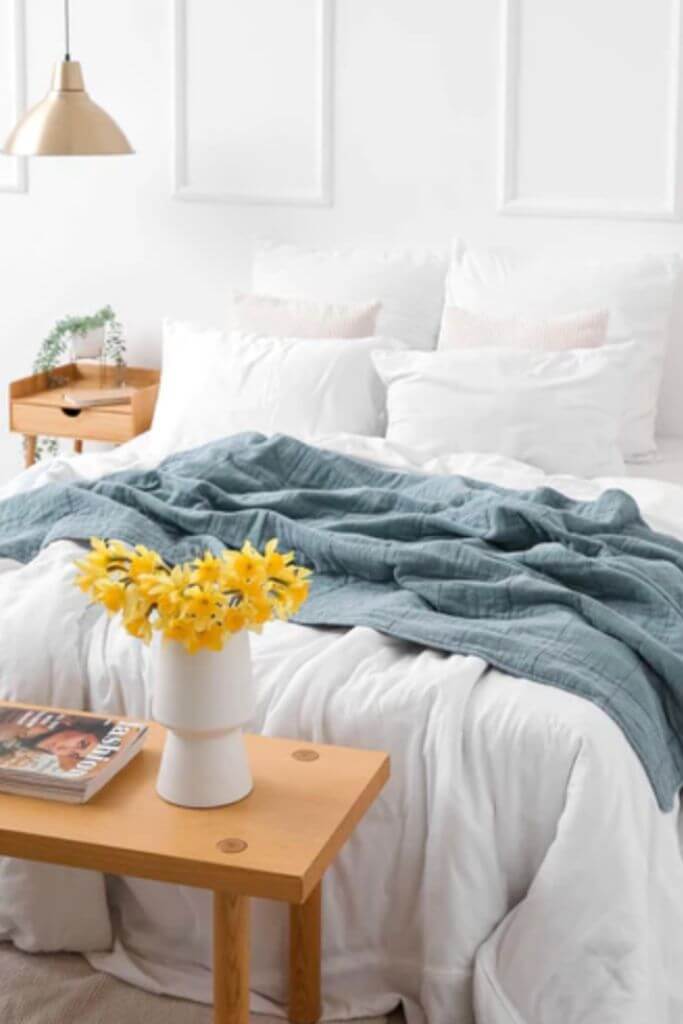
Down vs Wool Bedding: What’s the Difference?
Sure, you’ve heard of down, but exactly what is down bedding made from? Down is the soft layer of feathers closest to a bird’s skin and, most of the time, is a byproduct of the meat industry, where birds are often plucked while still alive. And even though most down is collected via inhumane methods, it still remains one of the most popular fillings for comforters, duvets and pillows because some people feel down is the fluffiest, warmest and most “luxurious” bedding material.
As for wool bedding, the fibers most often come from sheep, but wool can also be collected from other animals, such as goats and alpacas. Bedding that uses wool can either be entirely woven from the material, such as a wool throw blanket, or can be stuffed with wool fibers, such as a wool duvet or comforter. While wool can be shorn without causing any harm to the animal, sadly, that isn’t always the reality and it’s important to support bedding brands that only use ethically sourced wool.
Of Houses and Trees Says: If you buy a down or wool bedding product, make sure you know how the material was collected so you can make an informed decision.
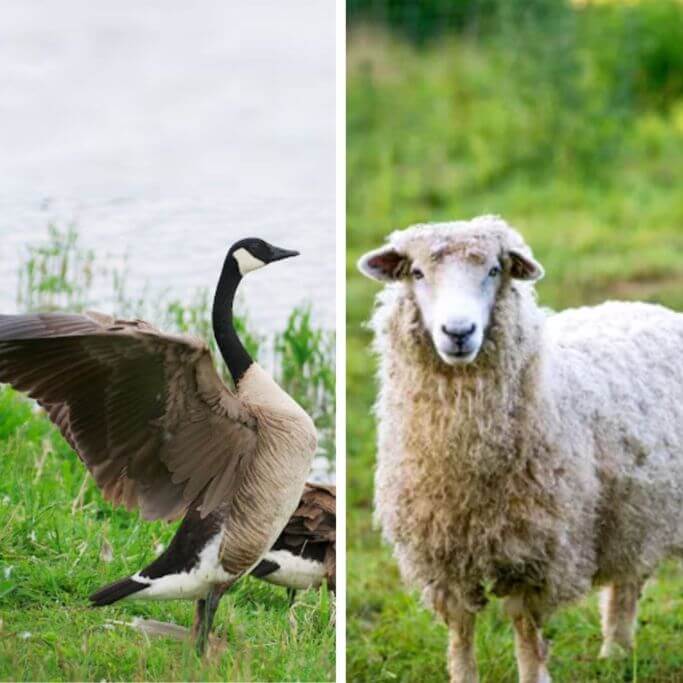
Sheep Wool vs Goose Down: Which is More Ethical?
All right, so let’s address the question raised above – can down and wool be harvested ethically, meaning without hurting the animals? When it comes to down, organizations such as Downmark believe that the material can indeed be collected humanely. But even in these cases, the down is collected from birds who are being raised for meat, and – if you’re plant-based like me – this “better” option probably still goes against your ethics.
As for wool, the story is the same in most of the industry. And while sheep usually aren’t killed in the wool-collecting process, they are often mistreated and abused. That being said, there are bedding brands that are trying to change the wool industry from the inside. Just be wary of claims that aren’t backed up and look for bedding (and other wool items) that have been certified by a well-known organization such as ZQ Merino and the Responsible Wool Standard.
Of Houses and Trees Says: Because “ethical down” is still largely a byproduct of the meat industry, it’s better to support a wool bedding brand with third-party certifications that ensure animal welfare.
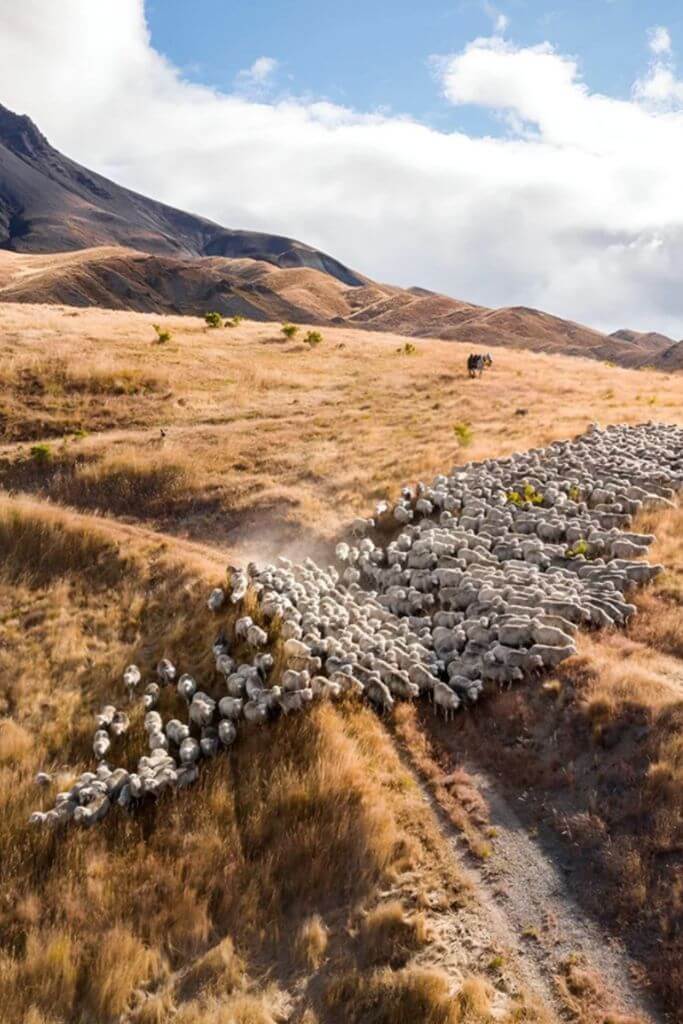
Need help choosing eco-conscious furniture and decor for your home? That’s what I’m here for!
Sheep Wool vs Down Comforter: Which is More Sustainable?
True, both wool and down are “natural” products. Unfortunately, just because something can be sustainable doesn’t mean that it actually is. The main issue with down and wool in relation to sustainability is that the animals are most often raised in large-scale agricultural settings, where issues such as greenhouse gas emissions, soil depletion and excess water consumption run rampant.
While parts of the wool industry are starting to address these issues through regenerative farming, the down industry is so intertwined with the meat industry that similar changes don’t seem to be a priority – or even a possibility. As for the materials themselves, yes, both wool and down should be naturally biodegradable, but as soon as they are mixed with anything non-biodegradable, such as polyester, their ability to fully breakdown is severely hampered.
Of Houses and Trees Says: Even though some bedding brands that use down claim to be “eco-friendly,” it’s a more earth conscious choice to go with regenerative wool.
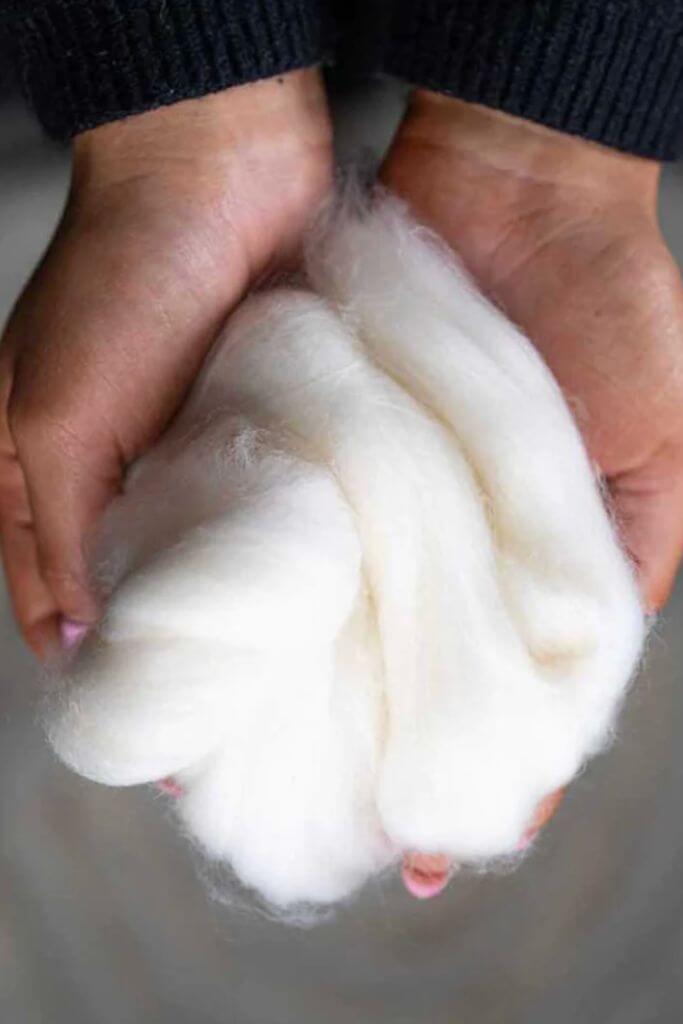
Wool Comforter vs Down Comforter: Which is More Comfortable?
It’s called a comforter for a reason, right? We want something snuggly! And that’s why, in the comfort debate, it will come down to personal preference. Some people just love the lightweight and warming qualities of a down comforter. However, an interesting fact that might make you rethink down is that the purpose of down on a bird is to trap warmth and moisture against its skin. This means those of us who sweat at night or fluctuate between hot and cold may need something more breathable.
Wool is known to be a more breathable option than down because wool is naturally temperature-regulating and water-absorbent. It can absorb moisture and allow it to evaporate. Wool can also conduct heat away from your body and is a very popular material for athletic wear for this very reason. These temperature-regulating properties are also why so many swear by a wool comforter.
Of Houses and Trees Says: Wool is the more breathable option for those whose body can’t seem to pick a temperature and stay with it at night and those who sweat a lot.

In Summary: Regenerative Wool is Where it’s At
Hopefully you now have a better understanding of the pros and cons of a down vs wool comforter, as well as the ethical and sustainable impact of both materials. If you think regenerative wool is the way to go, please visit Antipodean Home, where you can learn more about their practices and bedding products.
CLICK TO PIN ME!
Posted on February 19, 2024
Need help choosing eco-conscious furniture and decor for your home? That’s what I’m here for!
Former architectural technologist. Current treehugger.
I’m here to help you green your home – and your life.
Subscribe to the Of Houses and Trees monthly newsletter and I’ll send you my FREE list of “The 8 Best Places to Buy Eco-Conscious Decor Online.”
What on earth is sustainable design? Learn all about this eco-focused design method and read the latest posts about green architecture, interior design and decor.
Sustainable living is more than just a thing treehuggers talk about. It’s about making conscious choices everyday. Read the latest posts on living with the planet’s wellbeing always in mind.
Visit the Of Houses and Trees sustainable product directory and support brands trying to make a difference in the world.
Find out more about our 40 acres of land in Parkland County, Alberta and the sustainable home we built amongst the trees.
Need help creating the home of your dreams? Care about the planet? You’ve come to the right place! check out my affordable, sustainable e-design services.
Having a had time choosing paint colours? I’ve got you – and your walls – covered with an interior paint palette sure to compliment your home.
Have questions about creating an eco-conscious home? Go ahead – ask me! Sign up for one of my free online interior design consultations and ask me anything you want.

